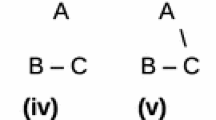Abstract
Phenetic classification corresponds to no biological model and lacks a sound philosophical basis. Cladistics (ignoring meaningless “transformed cladistics”) assumes divergent evolution and, usually, that best estimates of phylogeny are obtained by parsimony principles, both questionable assumptions at times. It is better than phenetics since more-or-less testable hypotheses are generated, but pitfalls are many, in data selection and interpretation (as to homology), and in commensurability of units and direction of change. Above all we learn: homoplasy is rife in nature. Much bad cladistics has been done. If it is to reflect phylogeny, classification cannot be artificially stabilized, but is its only aim to express (hypothesized) cladistic patterns? And can it do that with any degree of overall assurance? Biologists are legitimately interested in defining grades as well as clades. Recognition of an unequivocal clade-grade frequently leaves a paraphyletic grade residue that cannot itself be unequivocally resolved. This is a real problem that requires attention in formal taxonomy and in applying cladistics. Primarily morphological cladistics will be increasingly supplanted by molecular (nucleotide-sequence) cladistics. The role of evolutionary taxonomy will change accordingly.
Similar content being viewed by others
References
Burns-Balogh, P., Funk, V. A., 1986: A phylogenetic analysis of theOrchidaceae. — Smithsonian Contr. Bot. (Washington, D.C.)61: 1–79.
Cronquist, A., 1987: A botanical critique of cladism. — Bot. Rev.53: 1–52.
Ghiselin, M. T., 1969: The principles and concepts of systematic biology. — In: Systematic biology, pp. 45–55. — Washington: National Academy of Sciences.
Hennig, W., 1950: Grundzüge einer Theorie der phylogenetischen Systematik. — Berlin: Deutscher Zentralverlag.
—, 1966: Phylogenetic systematics. — Urbana: University of Illinois Press.
Hill, C. R., Camus, J. M., 1986a: Evolutionary cladistics of Marattialean ferns. — Bull. Brit. Mus. Nat. Hist., Bot. Ser.14: 219–300.
—, —, 1986b: Pattern cladistics or evolutionary cladistics? — Cladistics2: 312–375.
Hobish, M. K., 1986: The role of the computer in estimates of DNA nucleotide sequence divergence. — InDutta, S. K., (Ed.): DNA systematics. 1. Evolution. — Boca Raton: CRC Press.
Hull, D. L., 1979: The limits of cladism. — Syst. Zool.38: 416–440.
Humphries, C. J., Chappill, J. A., 1988: Systematics as science: a response toCronquist. — Bot. Rev.54: 129–144.
—, 1986: Cladistic biogeography. — Oxford: Clarendon Press.
Johnson, L. A. S., 1969: Rainbow's end: the quest for an optimal taxonomy. — Proc. Linn. Soc. New South Wales93: 8–45.
—, 1970: Rainbow's end: the quest for an optimal taxonomy. (Reprinted with addendum.) — Syst. Zool.19: 203–239.
—, 1975: On theProteaceae — evolution and classification of a southern family. — Bot. J. Linn. Soc.70: 83–182.
—, —, 1985:Myrtales andMyrtaceae—a phylogenetic analysis. — Ann. Missouri Bot. Gard.71: 700–756.
Platnick, N. I., 1986a: “Evolutionary cladistics” or evolutionary systematics? (Review). — Cladistics2: 288–296.
—, 1986b: Taxonomic methods and “evolutionary cladistics”. — Cladistics2: 375–377.
Raven, P. H., Axelrod, D. I., 1972: Plate tectonics and Australasian paleobiogeography. — Science176: 1379–1386.
—, —, 1974: Angiosperm biogeography and past continental movements. — Ann. Missouri Bot. Gard.61: 539–673.
—, —, 1975: History of the flora and fauna of Latin America. — Amer. Scientist63: 420–429.
Author information
Authors and Affiliations
Additional information
Invited paper, 14th International Botanical Congress, Berlin, Symposium on theory and practice of botanical classification, July 1987.
Rights and permissions
About this article
Cite this article
Johnson, L.A.S. Models and reality: Doctrine and practicality in classification. Pl Syst Evol 168, 95–108 (1989). https://doi.org/10.1007/BF00936091
Received:
Issue Date:
DOI: https://doi.org/10.1007/BF00936091




